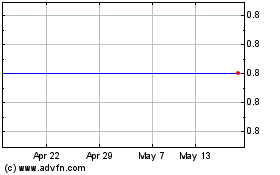By Tommy Stubbington and Saumya Vaishampayan
U.S. stocks limped into October, following the worst quarter for
benchmark indexes since 2011.
The Dow Jones Industrial Average fell 92 points, or 0.6%, to
16192, after rising shortly after the opening bell. The S&P 500
lost 0.3% and the Nasdaq Composite fell 0.6%.
The Stoxx Europe 600 slipped 0.4%, giving up earlier gains.
Stocks fell around the globe in the third quarter, driven by
renewed fears of slowing growth in China and uncertainty over the
U.S. Federal Reserve's plan to raise interest rates. The Dow Jones
Industrial Average, S&P 500 and Nasdaq Composite suffered their
worst quarterly percentage losses in four years.
The coming earnings season may not provide much relief for
stocks, as companies continue to grapple with an economic slowdown
and low oil prices weigh on energy-company earnings. Analysts
expect a fall in S&P 500 earnings for the third quarter, on the
heels of a decline in second-quarter profits. If the third-quarter
earnings pullback materializes, it would mark the first time since
2009 that earnings fell for two straight quarters, according to
FactSet.
Ralph Bassett, head of North American equities at Aberdeen Asset
Management, said he has been more cautious recently about buying
stocks that have fallen, given the uncertain outlook for
earnings.
"Do you really want to continue to add on weakness given the
lack of visibility?" he said. "Typically, it's our nature to add on
weakness, but you need to have conviction that it's going to work
out over the medium term," he added.
Economic reports in the U.S. were mixed Thursday.
U.S. manufacturers expanded at the slowest pace in more than two
years in September, according to the Institute for Supply
Management. The ISM's manufacturing purchasing managers index
slipped to 50.2, the lowest level since May 2013, from 51.1 in
August. Economists had expected the index to fall to 50.8.
U.S. employment data remained consistent with an improving labor
market. Initial jobless claims, a proxy for layoffs, rose by 10,000
to 277,000 in the week ended Sept. 26, the Labor Department said
Thursday. Economists had expected 271,000 new claims.
There were tentative signs that a slowdown in China's
manufacturing sector may be bottoming out.
China's official manufacturing purchasing managers index ticked
up slightly to 49.8 in September, beating expectations. A private
gauge of nationwide manufacturing activity, the Caixin China
manufacturing PMI, was down slightly at 47.2 in September, a
six-year low, compared with 47.3 in August.
In the eurozone, manufacturing data showed the pace of expansion
slowed slightly in September.
"Much of the uncertainty is already in the price. Investors are
well aware of the impending economic slowdown," said Jeremy
Batstone-Carr, chief economist and strategist at London-based
brokerage and wealth manager Charles Stanley. "I'd be concerned
about sounding the all clear, particularly as we head into the
reporting season," he said.
Asian markets extended gains after the economic data was
released. Japan's benchmark Nikkei Stock Average climbed 1.9%.
Investors in Japan also considered the Bank of Japan's latest
corporate survey, which showed that big manufacturers were more
cautious about the economy in the third quarter as exporters were
pressured by China's economic slowdown.
Markets in China and Hong Kong were closed for national
holidays.
Investors were looking ahead to Friday's U.S. jobs report, which
is closely watched by Fed officials as they decide when to raise
short-term interest rates. The Fed's decision to hold rates at
record lows in September helped fuel fears of slowing global
growth.
On Thursday, Jeffrey Lacker, president of the Federal Reserve
Bank of Richmond, said an October rate increase is possible.
Economists expect 200,000 jobs were created in September and
estimate that the unemployment rate held at 5.1%.
In commodities, U.S. crude-oil futures added 0.6% to $45.36 a
barrel, giving up earlier gains. Gold was flat at $1,114.80 an
ounce.
The yield on the 10-year Treasury fell to 2.024%, compared with
2.061% on Wednesday. Yields fall as prices rise.
Riva Gold contributed to this article.
Write to Tommy Stubbington at tommy.stubbington@wsj.com and
Saumya Vaishampayan at saumya.vaishampayan@wsj.com
(END) Dow Jones Newswires
October 01, 2015 11:49 ET (15:49 GMT)
Copyright (c) 2015 Dow Jones & Company, Inc.
London Capital Hldgs (LSE:LCG)
Historical Stock Chart
From May 2024 to Jun 2024

London Capital Hldgs (LSE:LCG)
Historical Stock Chart
From Jun 2023 to Jun 2024
